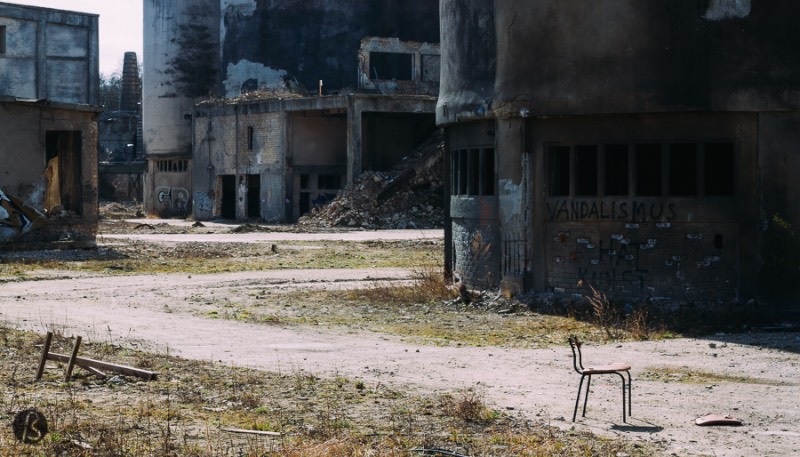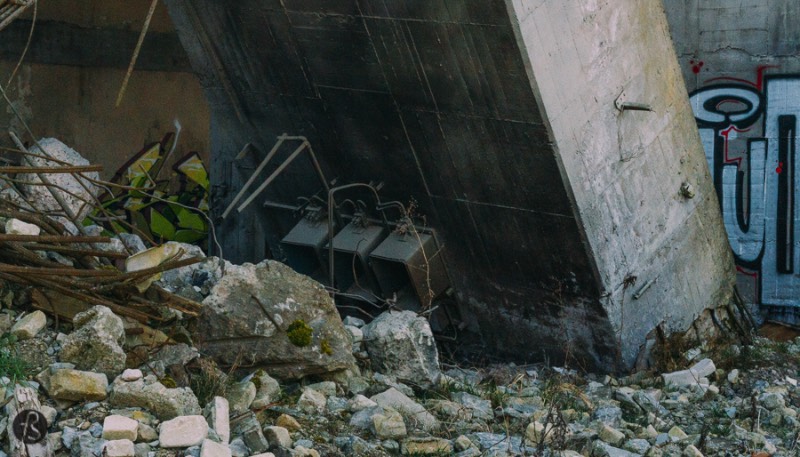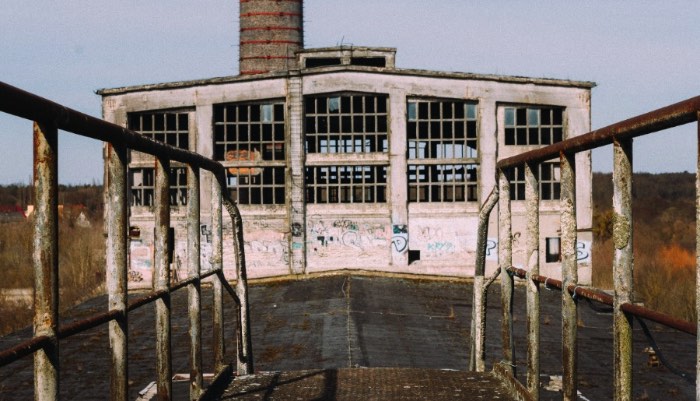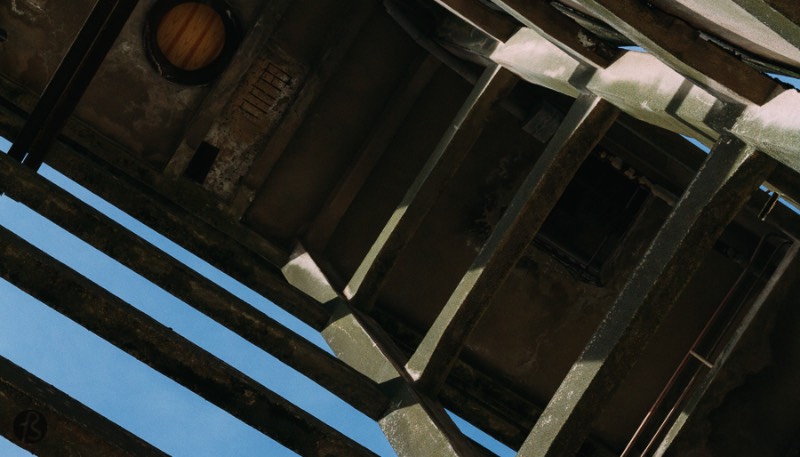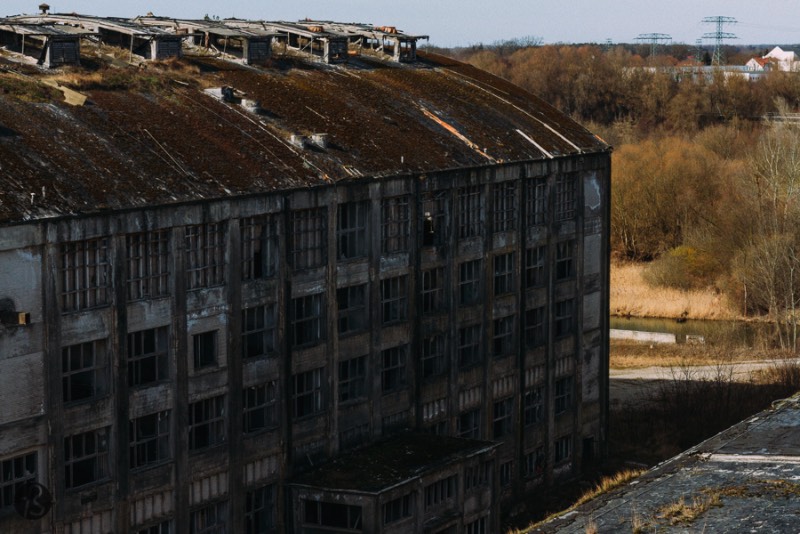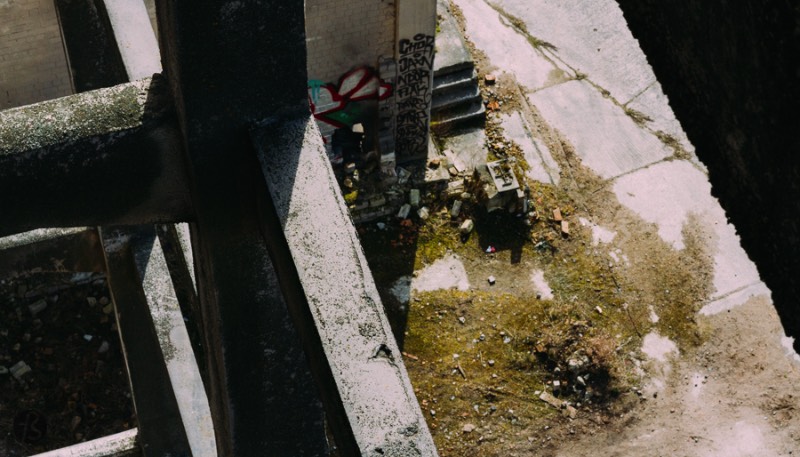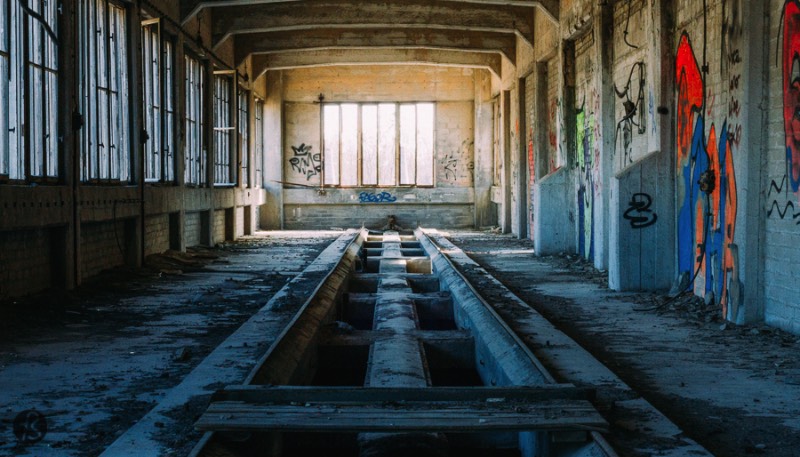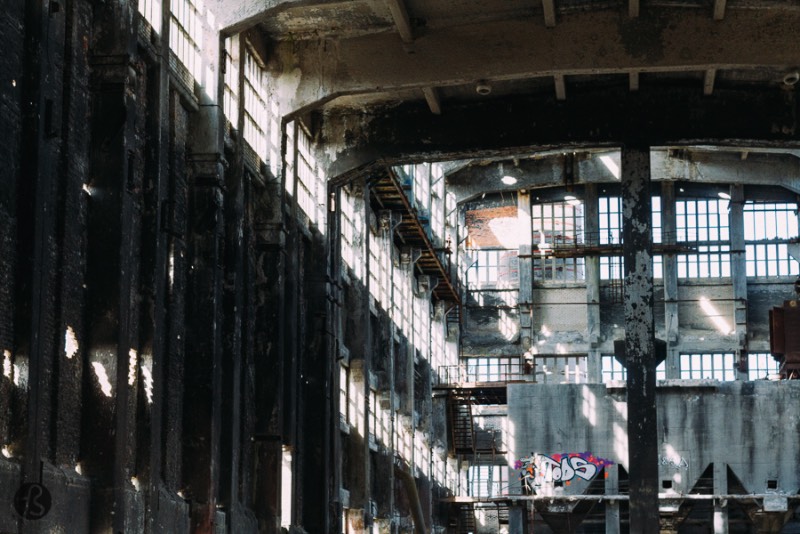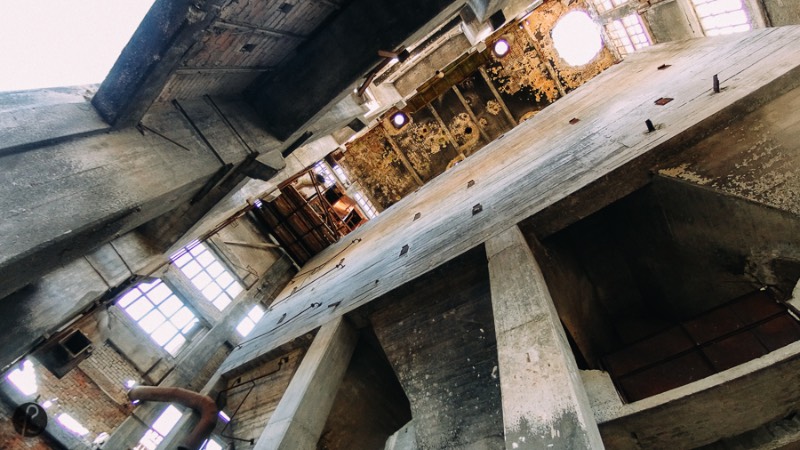The Chemiewerk Rüdersdorf is a huge abandoned factory in Rüdersdorf, a small town close to Berlin. The factory started its life in 1899 as a cement factory, and through the years, it has produced bauxite, animal feed, and phosphates for farming purposes. All of this is in the past.
This huge abandoned factory is standing still without any practical use.
In March 2015, we gathered a small group of friends and took our bikes on a train to Erkner. Once we reached Erkner, we put our bikes on the road and cycled to the location of the Chemiewerk Rüdersdorf.
It was easy to spot the giant building, surrounded by fences with razor-sharp barbed wire.
Exploring the Chemiewerk Rüdersdorf
Recently, the factory has become a popular place for filmmakers, from Enemy at the Gates to The Monuments Men. Even Rammstein was there a while ago to take some pictures from the Liebe ist für alle da album.
When we visited this abandoned factory on the outskirts of Berlin in 2015, the series Homeland was filmed at an abandoned factory.
We know that some scenes from Dark came from there and that Rammstein used the location for their video Deutschland.
Back to the history of this abandoned factory. Everything started in 1899 when the C.O. Wegener company started producing cement in this area of Rüdersdorf. The cement production lasted until 1939 when Preußag took over and started producing bauxite vital for the Nazi’s War effort (bauxite is one of the elements used to make aluminum).
After the end of the war, the Soviets took over and dismantled the factory. Only in 1950 was the VEB Glühphosphatwerk Rüdersdorf formed, and the production of the famous Rükana started, a hydrothermal defluorination made out of a mixture of rock phosphate, phospohorsäure, and soda.
After 1979, the chemical factory was integrated into the VEB agrochemicals Piesteritz.
After the German Reunification, it became doomed and was just another factory that couldn’t compete with the industry; for this reason, it closed down in 1999.
Now, there is nothing there besides huge empty halls.
The buildings at the Chemiewerk Rüdersdorf are enormous: the biggest buildings that Fotostrasse has ever explored. When you find your way to the top of the huge concrete canisters, you will probably get dizzy if you look down.
You will get dizzy as you imagine how some graffiti on the rooftop was done since it is filled with huge holes that would kill anyone going up there. From where I stood, the view was beautiful, and that was more than enough for me.
When you enter the Chemiewerk Rüdersdorf, you will see some green pools that look like something with three eyes will attack you. But don’t worry; there are no teenage mutant ninja turtles here.
You are going to see some weird-looking graffiti and stencils from PlotBot. His work is cool, and we loved seeing his graffiti there.
If you want to visit the Chemiewerk Rüdersdorf, you must find the Museumspark Rüdersdorf, and you will be fine. The only problems we had getting there was the long distance to the factory and climbing over the barbed wire.
Besides that, walk around and pay attention to where you are standing, and you should be fine. Sometimes, it might be good to look up and see if there are any potential hazards from above.
If you are interested in Urban Exploration in Berlin, please check out where we have been. Check out what Abandoned Berlin wrote here to learn more about the factory.
Update September 2019: We got a message from a reader saying that Chemiewerk Rüdersdorf seems off-limits now. There’s security around the area, and they call the cops. They ask you to erase the pictures you took; if you do that, it’s fine. If you don’t, it’s trespassing, but in German is called hausfriedenbruch, and you can be fined.
Chemiewerk Rüdersdorf: An Abandoned Chemical Factory close to Berlin
Gutenbergstraße, 15562
Rüdersdorf bei Berlin, Germany.
